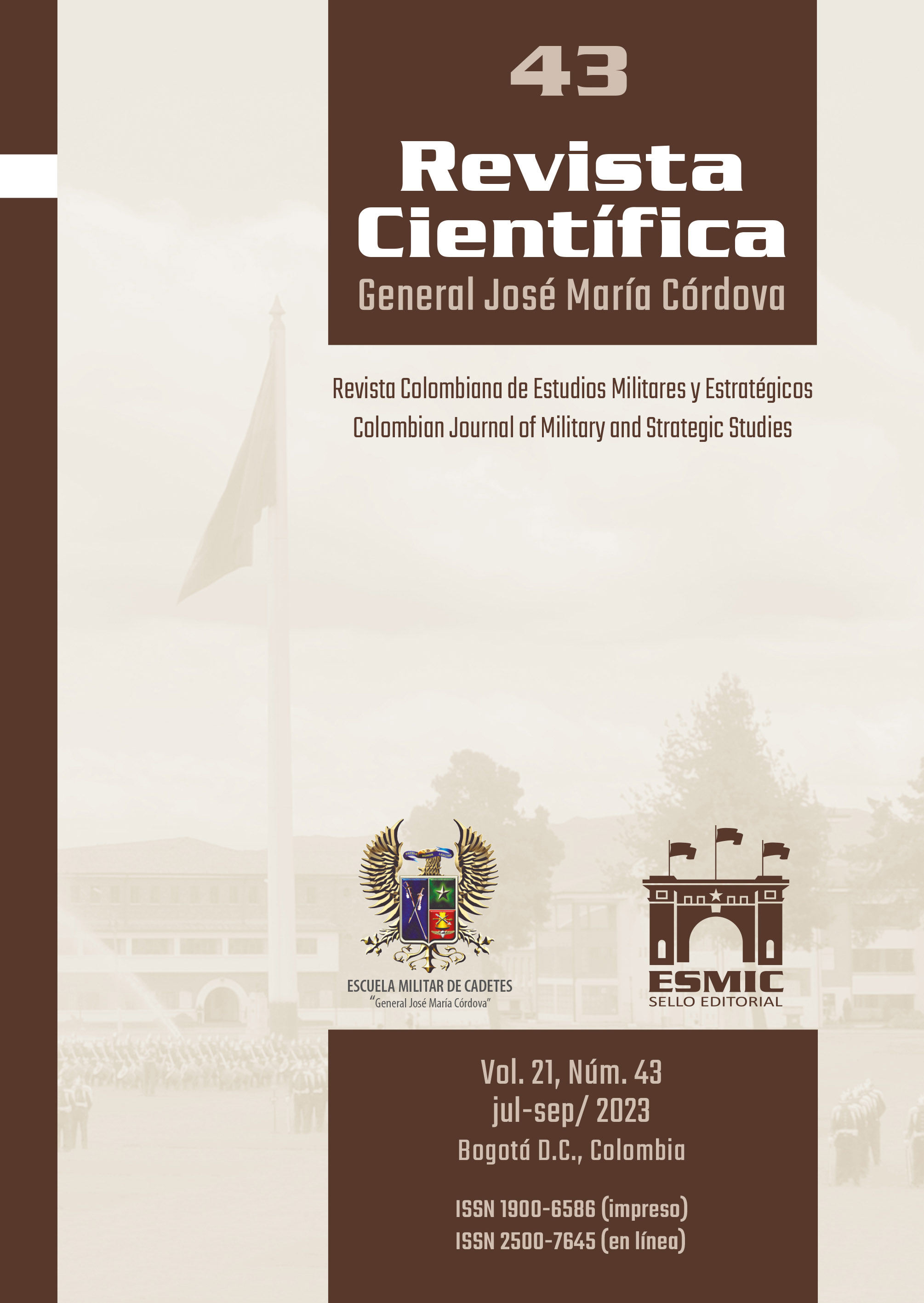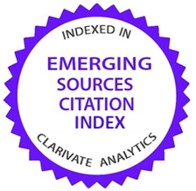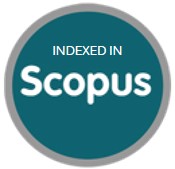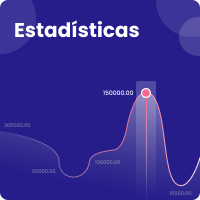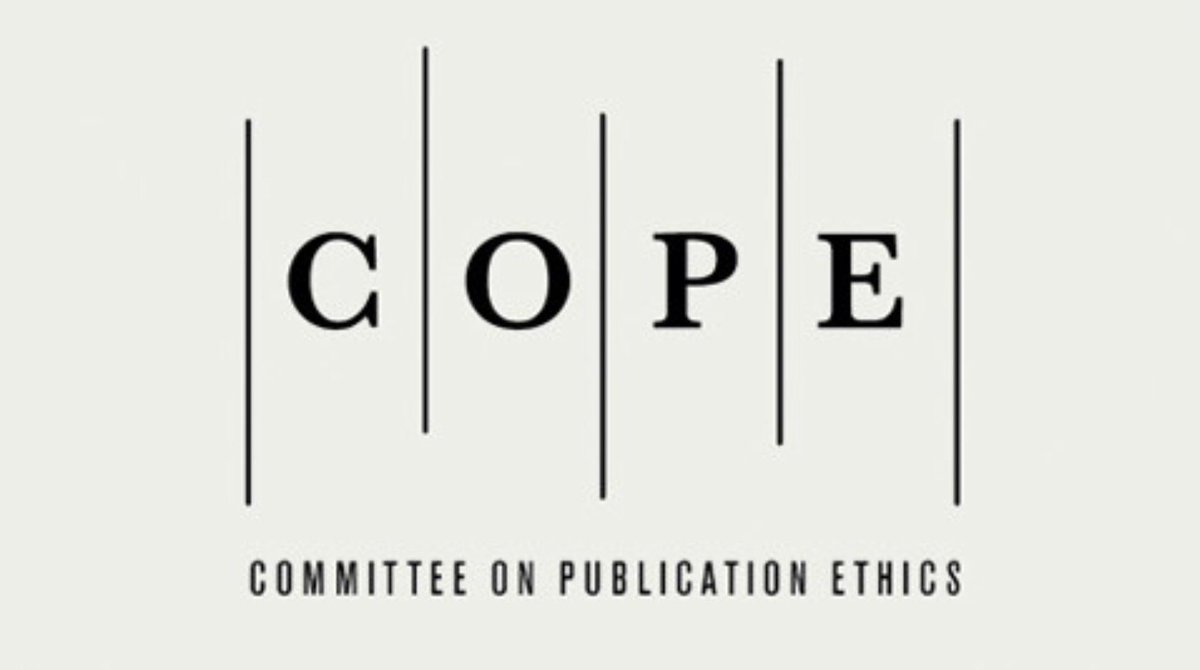Redes de narcotráfico marítimo: un análisis desde la complejidad y la simulación de sistemas sociales
DOI:
https://doi.org/10.21830/19006586.1070Palabras clave:
complejidad, crimen, narcotráfico, seguridad, sistemas sociales, tráfico marítimoResumen
El narcotráfico marítimo opera mediante redes descentralizadas en constante evolución, compuestas por organizaciones armadas, pequeños grupos y entidades de logística. Estas redes, influenciadas por el contexto, son adaptables e impulsan la innovación entre sus actores. Este artículo propone estudiar este fenómeno desde la teoría de la complejidad, que ofrece herramientas para analizar este tipo de sistemas, y con un enfoque metodológico basado en la simulación de sistemas sociales. Se propone desarrollar un modelo de simulación basado en nodos, conexiones, cargamentos y patrullajes. El modelo propuesto, que se desarrollará y presentará en posteriores artículos, aportará conocimiento empírico para comprender mejor las dinámicas del narcotráfico marítimo y poder anticipar los efectos de su intervención, de cara a las decisiones de las autoridades frente a este problema.
Descargas
Referencias bibliográficas
Albanese, J., & Reichel, P. (2014). Transnational organized crime: An overview from six continents. Sage.
Armada Nacional de Colombia. (2021, 3 de agosto). Culmina exitosamente la VII versión de la Campaña Naval “Orión”. https://tinyurl.com/2efc5xh9
Arquilla, J., & Ronfeldt, D. (2001). Networks and netwars: The future of terror, crime, and militancy. RAND Corporation. https://doi.org/10.7249/MR1382
Arquilla, J., Ronfeldt, D., & Zanini, M. (1999a). Networks, netwar and information age terrorism. En I. Lesser, B. Hoffman, J. Arquilla, D. Ronfeldt, M. Zanini, & B. Jenkins (Eds.), Countering the new terrorism (pp. 39-81). RAND Corporation. https://tinyurl.com/2a2467j8
Arquilla, J., Ronfeldt, D., & Zanini, M. (1999b). Networks, netwar and information age terrorism. En Z. Khalilzad, J. White, & A. Marshall (Eds.), Strategic Appraisal. The changing role of information in warfare (pp. 75-105). RAND Corporation. https://doi.org/10.7249/MR1016
Arrieta, C. G. (1990). Narcotráfico en Colombia: Dimensiones políticas, económicas, jurídicas e internacionales. Tercer Mundo.
Asmann, P., & Den Held, D. (2019). Boom de cocaína en Colombia motivaría aumento de decomisos en Europa. Insight Crime. https://tinyurl.com/8962bxux
Atehortúa Cruz, A. L, & Rojas Rivera, D. M. (2014). El narcotráfico en Colombia. Pioneros y capos. Historia y Espacio, 4(31), 169-207. https://doi.org/10.25100/hye.v4i31.1680
Benítez, G. J., Chandra, S., Cuadros Veloza, L., & Díaz Cárdenas, J. (2019). Following the price: Identifying cocaine trafficking networks in Colombia. Global Crime, 20(2), 90-114. https://doi.org/10.1080/17440572.2019.1588116
Benson, J. S., & Decker, S. H. (2010). The organizational structure of international drug smuggling. Journal of Criminal Justice, 38(2), 130-138. https://doi.org/10.1016/j.jcrimjus.2010.01.001
Bichler, G., Malm, A., & Cooper, T. (2017). Drug supply networks: A systematic review of the organizational structure of illicit drug trade. Crime Science, 6(1).
Bouchard, M. (2020). Collaboration and boundaries in organized crime: A network perspective. Crime and Justice, 49, 425-469. https://tinyurl.com/4mnxn9kr
Bouchard, M., & Morselli, C. (2014). Opportunistic structures of organized crime. En L. Paoli (Ed.), The Oxford handbook of organized crime. Oxford University Press.
Bowden, M. (2007). Killing Pablo: The hunt for the world's greatest outlaw. Grove/Atlantic.
Bright, D., & Leyva, A. (2022). Transnational criminal networks. En F. Allum & S. Gilmour (Eds.), Routledge handbook of transnational organized crime (pp. 35-50). Routledge.
Bright, D., Greenhill, C., Britz, T., Ritter, A., & Morselli, C. (2017). Criminal network vulnerabilities and adaptations. Global Crime, 18, 424-441. https://doi.org/10.1080/17440572.2017.1377614
Bright, D., Hughes, C., & Chalmers, J. (2012). Illuminating dark networks: A social network analysis of an Australian drug trafficking syndicate. Crime, Law and Social Change, 57, 151-176.
Britto, L. (2010). A trafficker’s paradise: The ‘war on drugs’ and new cold war in Colombia. Historia y Problemas del Siglo XX, 1(1), 159-177. https://ojs.fhce.edu.uy/index.php/cont/article/view/1063
Castells, M. (2010). End of millennium (vol. 3). John Wiley & Sons.
Castro Ríos, G. A., & Noguera Hidalgo, A. L. (2022). ¿Los seguidores eligen a sus líderes? Explicación desde la simulación basada en agentes. Revista Venezolana de Gerencia, 27(100), 1594-1612. https://doi.org/10.52080/rvgluz.27.100.19
Centro Internacional de Investigación y Análisis contra el Narcotráfico Marítimo (CIMCON). (2017). Dinámica del narcotráfico marítimo en Colombia y la región, año 2016 (001).
Centro Internacional de Investigación y Análisis contra el Narcotráfico Marítimo (CIMCON). (2018). Dinámica del narcotráfico marítimo en Colombia y la región, año 2017 (002).
Centro Internacional de Investigación y Análisis contra el Narcotráfico Marítimo (CIMCON). (2019). Dinámica del narcotráfico marítimo, año 2018 (003).
Centro Internacional de Investigación y Análisis contra el Narcotráfico Marítimo (CIMCON). (2020). Cátalogo de modalidades del narcotráfico marítimo 2020 (001).
Duijn, P., Kasihrin, V., & Sloot, P. (2014). The relative ineffectiveness of criminal network disruption. Scientific Reports, 4, 4238. https://doi.org/10.1038%2Fsrep04238
El Espectador. (2013, 27 de octubre). Hugo Aguilar y la historia de la persecución a Pablo Escobar. https://tinyurl.com/35h7m9ce
El País. (2019, 20 de septiembre). Incautan ocho toneladas de cocaína en un semisumergible en Tumaco, Nariño. https://tinyurl.com/34zyttvd
Fernández Menéndez, J., & Ronquillo, V. (2010). De los Maras a los Zetas, los secretos del narcotráfico, de Colombia a Chicago. Debolsillo.
Franco, K. (2019). Globalization and crime. Sage.
Gilbert, N. (2008). Agent-based models (Quantitative applications in the social sciences). Sage Publications.
Gilman, N., Goldhammer, J., & Weber, S. (Eds.). (2011). Deviant globalization: Black market economy in the 21st century. A&C Black.
Guillermoprieto, A. (2000). Las guerras en Colombia. Aguilar.
Helbing, D. (Ed.). (2012). Social-self organization (understanding complex systems). Springer Verlag.
Henderson, J. (2013). Víctima de la globalización: La historia de cómo el narcotráfico destruyó la paz en Colombia. Siglo del Hombre Editores.
Insight Crime. (2019, 17 de abril). Los Caparrapos. https://tinyurl.com/mrxbjcdu
Kan, P. R. (2016). Drug trafficking and international security. Rowman and Littlefield.
Kenney, M. (2007). From Pablo to Osama: Trafficking and terrorist networks, government bureaucracies, and competitive adaptation. Penn State University Press.
Lesser, I., Hoffman, B., Arquilla, J., Ronfeldt, D., Zanini, M., & Jenkins, B. (Eds.). (1999). Countering the new terrorism. RAND Corporation. https://tinyurl.com/2a2467j8
Lessing, B. (2018). Making peace in drug wars. Cambridge University Press.
Lin, L. S. F. (2022). Globalization of crime and digitized societies: A recent survey. En A. Choudury, T. Singh, A. Biswas, & M. Anand (Eds.), Evolution of digitized societies through advanced technologies (pp. 153-163). Springer.
Magliocca, N., McSweeney, K., Sesnie, S., & Wrathall, D. (2019). Modeling cocaine traffickers and counterdrug interdiction forces as a complex adaptive system. PNAS Journal, 116(16), 7784-7792. https://doi.org/10.1073/pnas.1812459116
McDermott, J. (2018). La nueva generación de narcotraficantes colombianos post-FARC: “Los Invisibles”. Insight Crime. https://tinyurl.com/bdhpk7my
McIllwain, J. (1999). Organized crime: A social network approach. Crime, Law and Social Change, 32, 301-323. https://doi.org/10.1023/A:1008354713842
Morselli, C. (2008). Inside criminal networks. Springer.
Nardin, L., Andrighetto, G., Conte, R., Székely, Á., Anzola, D., Elsenbroich, C., Lotzmann, U., Neumann, M., Punzo, V., & Troitzsch, K. (2016). Simulating protection rackets: A case study of the Sicilian Mafia. Autonomous Agents and Multi-Agent Systems, 30(6), 1117-1147. https://doi.org/10.1007/s10458-016-9330-z
Noguera Hidalgo, A. L. (2016). La relación organización-entorno y la ontología evolutiva: Una propuesta para la comprensión de las interacciones como producto del proceso evolutivo de reglas con la caracterización de la prestación del servicio de salud en urgencias [tesis doctoral, Colegio Mayor de Nuestra Señora del Rosario, Bogotá]. https://tinyurl.com/3hpk9jrj
North, M. & Macal, C. (2007). Managing business complexity: Discovering strategic solutions with agent-based modeling and simulation. Oxford University Press.
Olaya, C. (2012). The importance of being atheoretical: Management as engineering. En S. Groesser & R. Zeier (Eds.), Systemic management for intelligent organizations: Concepts, model-based approaches and applications (pp. 21-46). Springer.
Palma, O. (2013). Transnational networks of insurgency and crime: Explaining the spread of the revolutionary armed forces of Colombia beyond national borders [tesis doctoral, The London School of Economics and Political Science]. https://tinyurl.com/mr3ttthw
Palma, O. (2019). Commercial insurgencies in the networked era: The revolutionary armed forces of Colombia. Routledge.
Proceso. (1997). Comprueban en Colombia la “conexión mexicana” con el Cártel de Cali.
Romero, M. (2017, 19 de diciembre). Colombia supera 100 semisumergibles incautados. Diálogo. Revista Militar Digital. https://bit.ly/3F6RFV5
Sáenz Rovner, E. (2014). Los colombianos y las redes del narcotráfico en Nueva York durante los años 70. Innovar, 24(53), 223-234. https://doi.org/10.15446/innovar.v24n53.43947
Salazar Jaramillo, A. (2001). Drogas y narcotráfico en Colombia. Planeta.
Salomon, J. (2018, 14 de marzo). Los Puntilleros. Insight Crime. https://tinyurl.com/56vvzamy
Semana. (1982). Bonanza marimbera, adios! https://bit.ly/3tnXLxX
Serrano Cadena, R. J., & Gamboa, S. (1999). Jaque mate: De cómo la policía le ganó la partida a “el ajedrecista” y a los carteles del narcotráfico. Editorial Norma.
Shelley, L. (2018). Dark commerce: How a new illicit economy is threatening our future. Princeton University Press.
Siebers, P., Macal, C., Garnett, J., Buxton, D., & Pidd, M. (2010). Discrete‐event simulation is dead, long live agent‐based simulation! Journal of Simulation, 4, 204‐210. https://doi.org/10.1057/jos.2010.14
Spapens, T. (2010). Macro networks, collectives, and business processes: An integrated approach to organized crime. European Journal of Crime, Criminal Law and Criminal Justice, 18(2), 185-216. https://tinyurl.com/2z9zabj8
Sullivan, J., & Bunker, R. (2002a). Drug cartels, street gangs, and warlords. Small Wars and Insurgencies, 13(2), 40-53.
Sullivan, J., & Bunker, R. (2002b). Multilateral counterinsurgency networks. Low Intensity Conflict and Law Enforcement, 11(2-3), 353-368.
United Nations Office on Drugs and Crime (UNODC). (2022). Drug market trends: Cocaine, amphetamine-type stimulants, new psychoactive substances. World Drug Report 2022. https://tinyurl.com/bdhnzvdj
Varese, F. (2011). Mafias on the move: How organized crime conquers new territories. Princeton University Press.
Verdad Abierta. (2016, 12 de mayo). La Directiva N. 15: Estrategia tardía que abre varios interrogantes. https://tinyurl.com/4x2bz46f
Zaitch, D. (2002). Trafficking cocaine: Colombian drug entrepreneurs in the Netherlands. British Journal of Criminology, 44(4), 629–631.
Zanini, M., & Edwards, S. (2001). The networking of terror in the information age. En J. Arquilla & D. Ronfeldt (Eds.), Networks and netwars: The future of terror, crime and militancy (pp. 29-60). RAND Corporation. https://doi.org/10.7249/MR1382
Descargas
Publicado
Cómo citar
Número
Sección
Licencia
Derechos de autor 2023 Revista Científica General José María Córdova

Esta obra está bajo una licencia internacional Creative Commons Atribución-NoComercial-SinDerivadas 4.0.
Datos de los fondos
-
Departamento Administrativo de Ciencia, Tecnología e Innovación (COLCIENCIAS)
Números de la subvención 852

| Estadísticas de artículo | |
|---|---|
| Vistas de resúmenes | |
| Vistas de PDF | |
| Descargas de PDF | |
| Vistas de HTML | |
| Otras vistas | |


